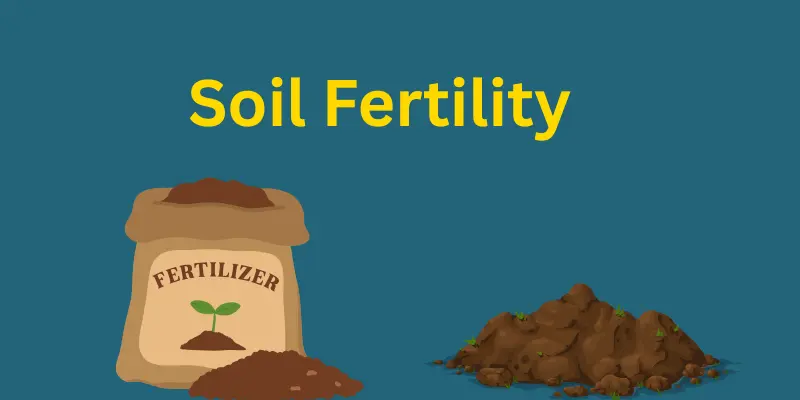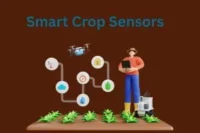Soil Fertility Practices – Rebuild the Earth Beneath Your Roots
Published: 14 May 2025
Soil fertility is a critical factor in sustainable agriculture, directly influencing plant growth, crop yields, and long-term land productivity. According to the Food and Agriculture Organization (FAO), over 33% of the world’s soils are degraded, largely due to erosion, nutrient depletion, and poor land management. Implementing effective soil fertility practices—such as adding organic matter, rotating crops, and minimizing tillage—not only restores vital nutrients but also supports soil biodiversity, water retention, and carbon storage.
So, guys, without wasting time, let’s jump into the article to learn the Soil Fertility Practices – Rebuild the Earth Beneath Your Roots
Core Components of Soil Fertility
- Physical properties: texture, structure, drainage
- Chemical properties: pH, nutrient levels, cation exchange capacity
- Biological properties: microbial life, organic matter, and root interactions

Soil Testing: Your First Step
- Start with a soil test to understand nutrient levels and pH balance.
- Retest seasonally or after major changes (e.g., liming, tilling, heavy rain).
- Testing avoids unnecessary amendments and targets specific soil needs.
Integrate Organic Matter Continuously
- Add compost, aged manure, or decomposed plant material regularly.
- Improves water retention, nutrient supply, and soil life.
- Supports long-term fertility through a natural soil food web.
- Keywords: compost for soil fertility, benefits of manure, organic matter in soil
Rotate Crops Thoughtfully
- Rotating crops prevents nutrient exhaustion and breaks pest cycles.
- Legumes fix nitrogen; deep-rooted crops improve soil structure.
- Rotation builds long-term fertility and improves soil biodiversity.
Cover Cropping – Feeding Soil in the Off-Season
- Cover crops like clover, vetch, and rye add biomass and prevent erosion.
- Help suppress weeds, fix nitrogen, and retain moisture.
- Roots nourish microbial life even when cash crops are absent.
- Keywords: cover crops for soil, green manure, soil protection during off-season
Reduce Soil Disturbance – Protect Structure and Life
- Tillage disrupts soil life and damages natural structure.
- Use no-till or low-till practices to conserve fertility.
- Helps retain organic matter and fosters microbial and fungal networks.
Manage Moisture Efficiently
- Overwatering causes nutrient leaching; underwatering halts biological processes.
- Use mulching and drip irrigation to regulate moisture consistently.
- Moisture is key to nutrient mobility and microbial activity.

Promote Microbial Activity
- Introduce compost tea, biofertilizers, or beneficial fungi to support biodiversity.
- Microorganisms help unlock nutrients and protect roots.
- Healthy soil life enhances nutrient cycling and plant resilience.
- Keywords: microbial soil amendments, compost tea use, living soil practices
- Correct deficiencies with bone meal, kelp, lime, or rock phosphate.
- Always match inputs with soil test results—balance is more effective than excess.
- Natural inputs are slower but build long-term health.
Embrace Regenerative Farming Principles
- Focus on rebuilding soil year after year, not just maximizing yield.
- Avoid synthetic overload, encourage biodiversity, and recycle nutrients.
- Regenerative farming restores natural fertility and land resilience.
- Keywords: regenerative agriculture soil, sustainable soil practices, soil healing methods
Track and Adjust Practices Regularly
- Keep records of inputs, visual changes, and test results.
- Monitor how soil responds to specific practices and adjust accordingly.
- Soil is living—it evolves with your care and your crops.
Final Thoughts
- Building soil fertility is not just a technique—it’s a mindset.
- The land remembers what you give to it and repays it over time.
- “When you feed the soil with care and purpose, you grow more than crops—you grow legacy.”

- Be Respectful
- Stay Relevant
- Stay Positive
- True Feedback
- Encourage Discussion
- Avoid Spamming
- No Fake News
- Don't Copy-Paste
- No Personal Attacks

- Be Respectful
- Stay Relevant
- Stay Positive
- True Feedback
- Encourage Discussion
- Avoid Spamming
- No Fake News
- Don't Copy-Paste
- No Personal Attacks





